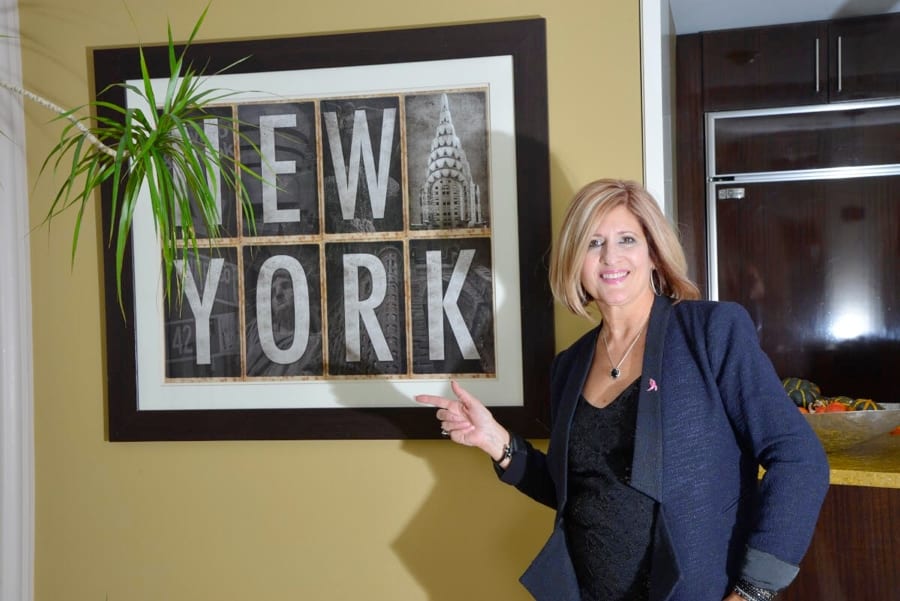LUXE Tips About Patents, Trademarks And Copyrights: What To Know And How To Protect Your Ideas

When I first began planning to launch my companies, I got involved in unchartered territories from start-ups to product design and development, intellectual property and more. What was most familiar was strategic planning, branding, media, sales and marketing, distribution channels and such. I was required to pull all these services together much like an “integrated media manager” by linking product and service with added value.
The glue that kick-started my product development was learning about the patent difference, proper usage of trademarks and copyrights, and how to apply function, form, and fashion to design. I did this with both my creative media services agency and luxury intimate apparel fashion businesses simultaneously.
I learned that patent protection is key when you innovate an idea and need to protect it. So, I took the necessary steps to create provisional patents, utility, and design patents, and learned the proper use for trademarks vs copyrights. As an entrepreneur over the past ten years, I’ve applied ingenuity and innovation to new ideas. I felt very strongly about protecting my brands and hope you feel the same way and can apply some of these techniques to yours. The steps I took to plan the luxe collection for Crisscross Intimates is highlighted below.
The patent difference:
- Provisional patent.
A provisional patent application allows you to file without a formal patent claim, oath or declaration, or any information disclosure (prior art) statement. It allows the term “Patent Pending” to be applied in connection with the description of the invention. A provisional application for patent has a pendency lasting 12 months from the date the provisional application is filed. The 12-month pendency period cannot be extended. You must be ready to proceed or move on. - Utility patent.
A utility patent is a patent that covers the creation of a new or improved product, process or machine. A utility patent, also known as a “patent for invention,” prohibits other individuals or companies from making, using or selling the invention without authorization. When most people refer to a patent, they are most likely referring to a utility patent. - Design patent.
A design patent is a form of legal protection granted to the ornamental design of a functional item. Design patents are a type of industrial design (products of mass production). Ornamental designs of jewelry, furniture, beverage containers and computer icons are examples of objects that are covered by design patents.
What is the difference between a design and utility patent?
A design patent protects only the ornamental appearance of an invention, not its utilitarian features. A utility patent would protect the way an article is used and works. It can be very confusing to understand the difference between a design patent and other types of intellectual property.
Why conduct a patent search and how to go about properly executing one?
A comprehensive patent search involves identifying relevant patents and patent applications published by the USPTO. Once this has been identified, conduct a comprehensive search based on your specifications. A detailed research report should be emailed to you outlining the findings. It is wise to pay for this search prior to finalizing your patent.
Why I created different patents for different purposes.
I wanted full patent protection for the invention of my brands and hence obtained a utility patent for the overall umbrella of Crisscross Intimates – which covers the designated “IP” for the post-surgical intimate apparel line and then, created applicable design patents for other styles. Likewise, I did the same with a mobile invention entitled YouGO Mobile – a universal mobile charger device, distinguishing unique product innovations from others on the market with a utility patent.
I added design patents for other Crisscross bra designs and hospital gowns, using emerging technologies and innovation with style. I did not pursue a design patent with the overly saturated marketplace for the Crisscross medical scrubs after conducting patent searches. Yes, overall, this was a costly venture however deemed necessary in competitive marketplaces to set my brands apart from others. It also allowed me to protect my IP (Intellectual Property) going forward.
The trademark/copyright difference
- When to trademark vs copyright?
If you are looking to protect your innovative name, slogan, logo or related brand, you need to put a trademark™ on it! A trademark search should also be performed to ensure no one owns that name before you spend money towards creating your new identity.If you are looking to copyright your work, that simply means… a copyright® protects works of authorship, such as writings, music, and works of art that have been tangibly expressed. Copyright laws also protect certain kinds of original works. Any creation that is fixed in a recording medium — whether paper, compact disc, film or digital — is subject to copyright. The industries dealing with copyrighted material such as books, newspapers, recorded music, movies and software place high-value protection given to the owners of the underlying intellectual property. - What’s the difference if I trademark vs copyright my brand?
Copyright and trademark are completely different and really have nothing to do with each other. The difference between a trademark using the ™ symbol and the copyright using the ® symbol also distinguishes them. It is not necessary to use these symbols throughout your copy making a visual mess. For web content, ads, and brochures as an example, you do not need to use these symbols throughout your collateral. I learned it was okay to use once at the beginning of a press release or document as rule of thumb for documentation or marketing collateral. - Why did I choose to trademark certain logos and brand names?
I decided to copyright my trilogy series of book titles; “My Pain Woke Me Up – BLISS!, Legal Injustice and LIVE Your Dreams” self-published thru authorHOUSE® Publishing. I trademarked my company logos and names used for branding purposes – e.g., Jean Criss, Jean Criss Media, CRISSCROSS Intimates, etc.
I hope all this jargon provides the basic guidelines for creation, ideation, and innovation. I put these best practices into play by first consulting and hiring appropriate media entertainment counsel to handle the business entities and patent and trademark attorneys to provide the proper guidelines and direction for your business(es).
It can be complicated and confusing. Just keep the basics in mind and leave the legalese, as I say, to the lawyers to handle.
Wishing you a great start!
Have you read?
# World’s Best Countries To Invest In Or Do Business.
# Most Expensive Countries In The World To Live In, 2019.
# Global Passport Ranking, 2019.
Bring the best of the CEOWORLD magazine's global journalism to audiences in the United States and around the world. - Add CEOWORLD magazine to your Google News feed.
Follow CEOWORLD magazine headlines on: Google News, LinkedIn, Twitter, and Facebook.
Copyright 2025 The CEOWORLD magazine. All rights reserved. This material (and any extract from it) must not be copied, redistributed or placed on any website, without CEOWORLD magazine' prior written consent. For media queries, please contact: info@ceoworld.biz











